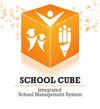Teachmint can help an institute in various tasks that are related to running a school. Schools are faced with many challenges, one of the most difficult is finding enough time...
View ProfileBest School Management Software in India For 2024
School management software is the most efficient software that is designed to manage the overall operation of the school and also to reduce the paper works in the administration of schools and other educational institutions. School management software has different modules that help your teachers and staff in maintaining students’ academic history, records, and other important information. Additionally, the software will also help you in storing information for future use. With proper analysis and detail collected in the market, it is possible to design the best school management software and the right place would be Techimply to have the software.
List of 20 Best School Management Software in 2024
Entab Infotech Pvt Ltd. is considered India's Most Preferred School Management Software provider for 18 years. With more than 1200 schools as trusted clientele, we have established ourselves as a...
View Profile
Vidyalaya School Software

An Integrated School Management Software To Meet All Your Administrative Needs.
Vidyalaya School Software is the best School Management Software Trusted by 1300+ Schools and awarded as "Most Innovative School Management ERP", Go online with Vidyalaya Cloud School ERP.
View ProfileThere is no need to install any kind of software on client machines. EDRP can be accessed from anywhere through the internet just about anyone with working knowledge of computers...
View ProfileWINER is one of the best school management software available in India. School software is crafted based on Indian school requirements and is used by different CBSE/ICSE/State and matriculation schools...
View ProfileOnline school management platforms to assist teachers to achieve the highest student engagement in their classes. Online student performance management evaluation, analysis, and reporting platform.
View ProfileThe Financial Enterprise resource planning for Institute is a cross-functional enterprise system driven by an amalgamated suite of modules that assists with the basic internal business processes of the Institute.
View ProfileDigicamp is an online school management software for CBSE and concise schools. For CBSE schools this software has functionality for submission scholastic grades (9-point grade scale) and also co-scholastic (5-point...
View ProfileCtrl-A is the best tool that lets you run all aspects of campus through a simple, easy-to-learn "Manage, track and control everything with a single click" interface. Ctrl-A is a...
View ProfileBYJU’S is India’s most enormous Ed-tech corporation and the writer of India’s biggest K12 getting-to-know-an app, which offers noticeably adaptive, attractive, and practical studying applications for college students in lessons...
View ProfileTrackMyClass is a problem-free technology platform to cloud-enable your campus. It is a powerful traditional ERP functionality along with trend-setting attributes such as Private Social Network, LessonTube, Trackables for skill...
View ProfileJack Prodigy is a comprehensive Education Management software that gives you an end-to-end integrated solution for school management needs. School software bridges the gap in communication between parents, students, and...
View ProfileSchool Cube provides digitalization in schools by providing a school management system. The school management software is procured by various institutes from all over India.
View ProfileFedena is a multipurpose school management software that is procured by thousands of educational institutions worldwide for all administration, management, and learning-related activities.
View ProfileAdvanta Rapid ERP is a powerful and user-friendly School ERP software. The school management system assists you to easily control your students, teachers, staff, and more in your school.
View ProfileEduberryERP is a flagship product of Umbworld Edusoft is a revolutionary educational ERP that has been specially designed to bring the level of education to the next level.
View ProfileENTRAR provides customizable and configurable modules, the efficient school management software.
View ProfileApplane help enterprise and educational institutions and increase efficiency and performance through seamless process automation and control.
View ProfileAcademia is comprehensive enterprise software for universities, colleges, schools, and training institutions looking to automate their academic and administrative processes. It assists automate and control the entire campus operations, administration,...
View ProfileFlipscool is a school management software that has been designed to assist not only teachers and students but school administrators, librarians, and accountants for a smooth, uninterrupted and effective organization.
View Profile

Frequently Asked Questions (FAQs)
School Management software is one kind of large database system that can be used to manage schools day-to-day activities effortlessly. It allows school staff to store and manage almost all of the essential information of the school. Staff, as well as parents on the single platform due to which chances of redundancy become less compared to traditional processes.
Take a look at the benefits of using school software:
- Increase productivity
- Collaboration is no more nightmare between students and teachers
- Utilization of natural resources
- Transparency with parents increase
- Reduction in communication cost
- Manageable workload
- Anywhere Access policy
Identifying the best software is indeed an important thing to consider, let’s review the best school management software:
- Winer
- Classmatrix
- EDUMAAT
- Astral School Management Software
- CTRL-A
- Track My Class
- IFW Campus ERP
- JackProdigy
- School Cube
- Advanta
School software indicates the five primary management functions of the school, starting from planning, organizing, directing, monitoring, and supervision, and evaluating all the vital aspects of school processes and each of them are continued actions.
The school administration consists of planning, directing, organizing, and handling materials/human resources in an education setting including the financing schools system.
This software is politely as known as positively impacts on parents, teachers, students, administrations or non-education staff and management. It reduces hample work of repetitive tasks, processes by taking over them or by making communication work easier through the use of intuitive features.
A student management generally referred as student information system (SIS) manages schools data, communication, and scheduling. SIS will also generate and use large amounts of data which has to be communicated appropriately for students, staff, and parents.
School management software offers both web-based software and app for each of their users. The school software provides easy data storage, security, and environment-friendly approach for data management of schools. It also automates the management system and reduces human interactions for quality outcomes.
Well, implementing school management software increases productivity by decreasing the managerial time frame for improving the accuracy of data. School software offers a better platform for collaborating student-teacher beyond the classroom’s interaction for maintaining regular conversation and work parallelly.
- School management software offers a host of benefits that streamline and enhance various administrative and educational processes within educational institutions. By automating tasks such as attendance tracking, grade management, and communication with parents, the software reduces administrative burden, allowing educators to focus more on teaching.
- Additionally, it promotes transparency by providing real-time access to academic progress and schedules for both teachers and parents. The software's centralized database ensures efficient data management, simplifying record-keeping and reporting.
- It also facilitates communication between teachers, students, and parents, fostering a collaborative learning environment. Moreover, school management software can aid in optimizing resource allocation, aiding in budgeting and inventory management.
- Overall, its implementation improves operational efficiency, communication, and data accuracy, ultimately contributing to an enriched educational experience for all stakeholders.
Best School Management Software in India for every business
Best School Management Software in India For 2024 in following states
- Gujarat
- Rajasthan
- Delhi
- Kerala
- Maharashtra
- Uttar Pradesh
- Karnataka
- Tamil Nadu
- Punjab
- Haryana
- Telangana
- West Bengal
- Jharkhand
- California
- Florida
- Texas
- Arizona
- Michigan
- North Carolina
- Virginia
- Colorado
- Ohio
- Oregon
- Indiana
- Utah
- Rhode Island
- British Columbia
- Alberta
- London
- New South Wales
- Dubai
- Bristol
- North-Holland
- Moscow
- Harju
- Federal Capital Area
Best School Management Software in India For 2024 in following cities
- Ahmedabad
- Gandhinagar
- Mumbai
- Pune
- Bangalore
- Hyderabad
- Chennai
- Gurgaon
- Los Angeles
- Kolkata
- Austin
- Jaipur
- Delhi
- La Jolla
- San Francisco
- Sydney
- Kanpur
- Kochi
- Greenwood village
- Lucknow
- Madurai
- Mohali
- Ranchi
- Charlotte
- Ann arbor
- Sunnyvale
- Chandigarh
- Dubai
- Portland
- Phoenix
- Tampa
- Providence
- Kozhikode
- Boulder
- Vancouver
- Clifton
- london
- Amstelveen
- Mclean
- Moscow
- Dallas
- Salt Lake City
- Tallinn
- McKinney
- Cincinnati
- Calgary
- Jeffersonville
- Islamabad
- New York
- New Delhi
- NA
- Gurugram
- Bengaluru
- Lincoln
- Lahore
- United States
- Chatswood
- Maharashtra
- St Petersburg
- Layton
- Trivandrum
- Grand Rapids
- New Orleans
- Virginia
- Manly
- Calicut
- Gujarat
- Coimbatore
- Suwanee
- Centurion
- Abu Dhabi
- Kerala
- Sugar Land
- Kuwait
- Visakhapatnam
- Villeurbanne
- Folsom
- Stevens Point
- Foothill Ranch
- Garki
- Kalamaki
- Kazhakkoottam
- Bedfordview
- St. Charles
- 076026 64490
- South Delhi
- Musselshell
- Glastonbury
- Seine-Saint-Denis
- Miami Lakes
- Idaho Falls
- Lynnwood
- Waukesha
- Hickory
- Ringwood North
- Deephaven


 0.0
0.0




















.png)
.png)

